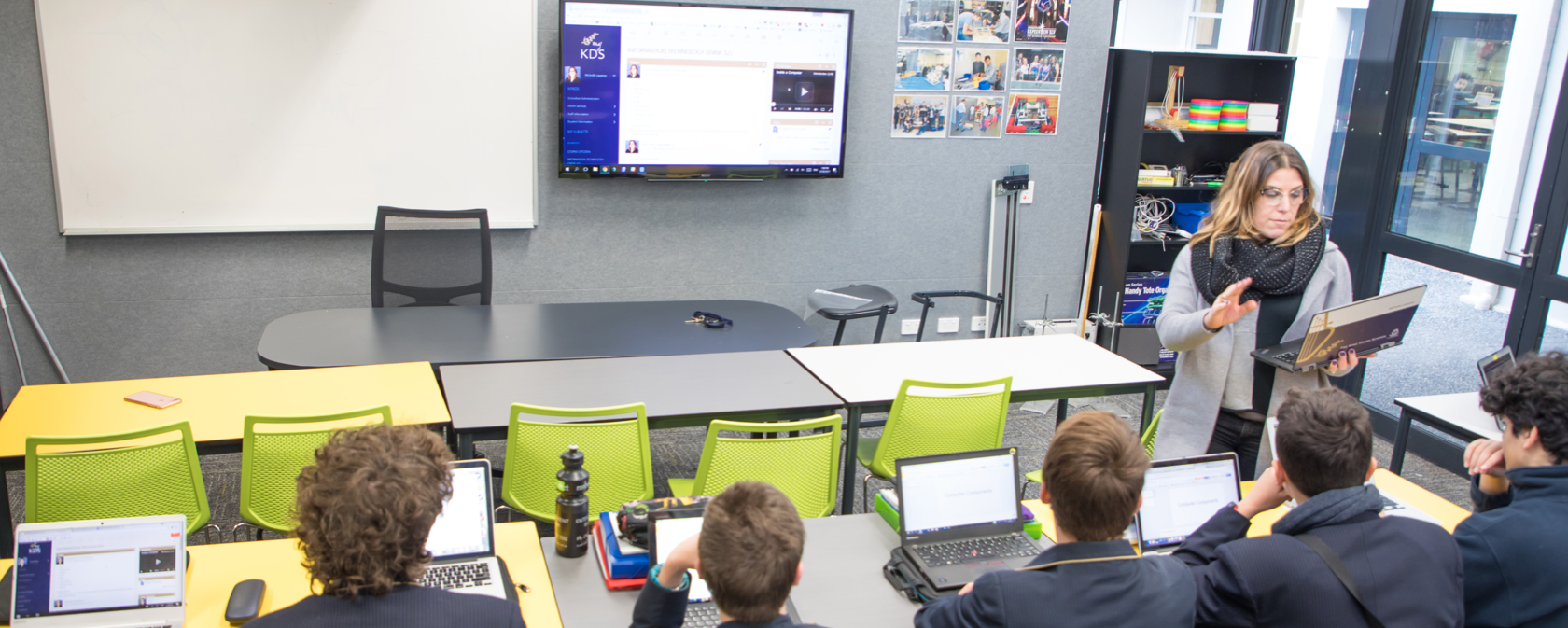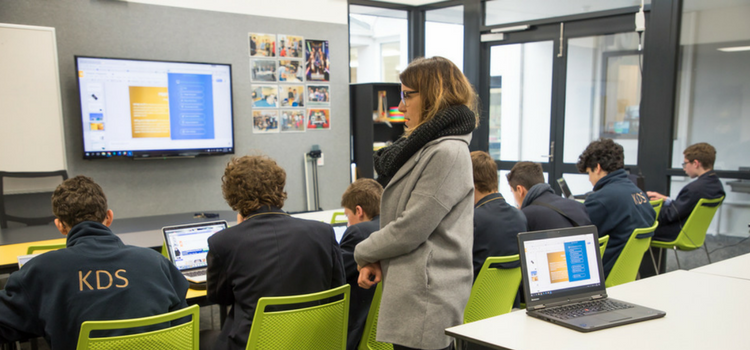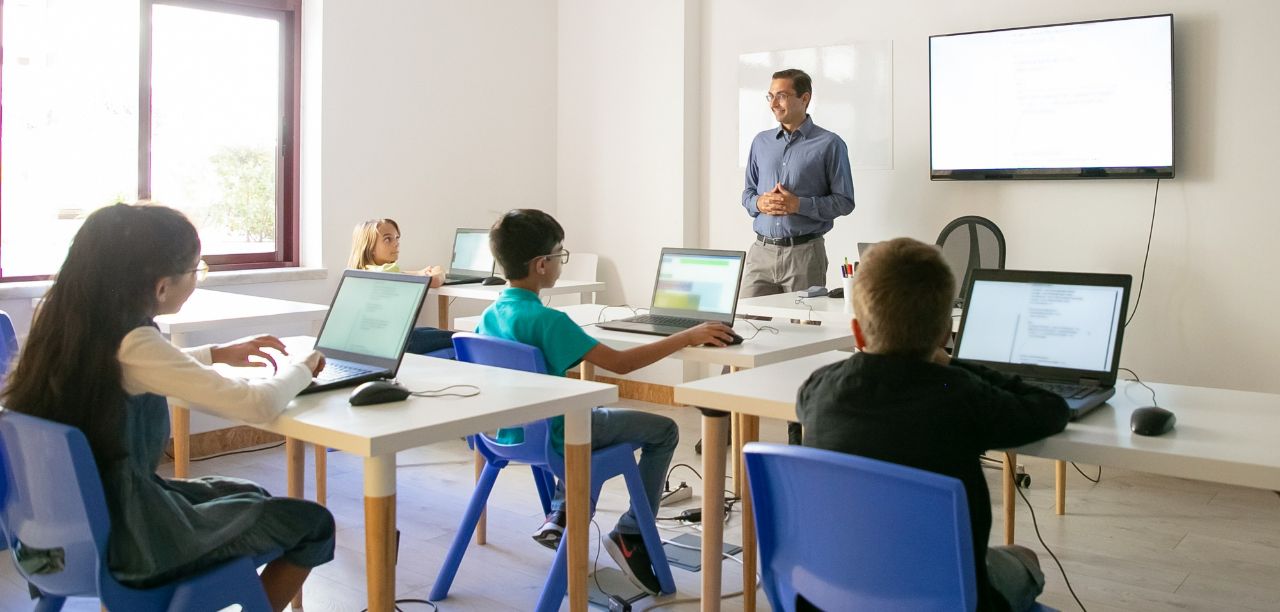8 Reasons Screen Mirroring is an Essential Resource for Improving Student Learning with Technology
A recent study from Gallup and the New Schools Venture Fund reveals that around two-thirds of teachers are using digital tools such as websites, apps, online tutorials, online games, videos or programs to teach every day, and more than half of students say they use these tools to learn every day. In spite of this, a large percentage of both teachers and students say they would like the opportunity to further involve digital tools in their learning, and this interest is particularly high among teachers at high-poverty schools.
Perhaps what is even more encouraging is that nearly half of all K-12 students who responded to the survey noted that they use digital learning tools every day, just for fun. This number is highest among high school students, most of whom have their own devices on which to access these tools inside and outside of the classroom.
With all these digital resources piquing the interest of teachers and students alike, schools often find themselves asking how they can improve on the use of these tools and integrate them more effectively into a social classroom. How can education, technology, and great communication come together in a new way to improve outcomes across the school? Technology has the answer to this, and it’s a lot simpler than it may seem.
How Display Technology Is Changing The Education Landscape
The definition of digital tools for learning is broad, including websites, apps, online tutorials or games, and even videos. One aspect of classroom technology that school officials and teachers often fail to think about -- in spite of using regularly -- is their display technology. Gone are the days of blackboards that the teacher stands in front of for the duration of the class. In its place, a surprising number of schools have turned to Apple TVs and HDMI cables.
While these options can be cost effective, they fail to offer the features that teachers need to transform a simple screen into a truly customizable and interactive learning tool. Additionally, cheap HDMI cables often break, leaving teachers to scramble for an alternative way to teach the lesson without the use of the video or tutorial they were intending to display.
Display technology like screen mirroring has become advanced yet remains simple to use, and the right platform has the capability to work with any device, meaning the sky's the limit on how it can be incorporated into daily student instruction.
Personalize student instruction? Check. Give students permission to send their screen to the classroom display for social interaction, engagement, discussion, and a deeper learning experience? Check. Cost effective? Check. While often not considered part of the list of resources for effective learning, simply pairing any app or software with screen mirroring can amplify that app’s role in student learning and improve outcomes.
8 Benefits of Wireless Screen Mirroring Technology in the Educational Arena

With the right wireless screen mirroring platform, schools can have a flexible, digital tool that works with any device, any number of users and classrooms, any media type, any learning type, and any display. It has similar characteristics as a mainstream Apple TV, but it is designed specifically for use in the educational system and is fully-featured to meet the actual day-to-day needs of teachers and IT admins trying to engage students and personalize their learning.
In addition, some platforms come with advanced digital signage capabilities that go beyond single classroom settings and can be used throughout a school building or campus, which is essential in today’s school systems. Here is a look at some of the benefits of this technology.
1. Student Engagement

Technology has -- for both better and worse -- greatly influenced student engagement. While technological tools are available to help bring the world to a single classroom, technology has also contributed to a larger number of distractions in the learning experience, unwanted pressure from social media, and the presence of information that is not always factual.
Attempting to shield students from technology is an impossible endeavor, as it impacts everything they do and will be something they use for their entire lives. Instead, the impetus is on parents, teachers, and schools to manage the information being presented through technology and harness it for good. To that end, a number of ideas on how to use technology to increase student engagement have been suggested, including:
- Posting assignments as blogs, which allows students not only to present their written work, but also allows them to help each other with the work by posting in the comments.
- Submitting assignments as podcasts or videos. Wireless screen mirroring provides the option of multiple displays throughout the classroom, including having a video play on one screen, with a power-point presentation on another.
- Collaborating with classrooms down the hall or on the other side of the world.
- Gamifying the classroom by having competitions or levels of achievement in lessons.
- Creating infographics to explain complex lessons to students.
- Recording and playing back a student reading.
Personalized learning is an important aspect of ensuring all students are being equipped with the skills and knowledge they need to make their way in the world, and different strategies work for different students. Personalization of the educational process does not come without intense interaction between the student and their teacher.
Screen mirroring technology facilitates personalized learning by allowing any app, with any number of purposes, to expand and become more of a community experience within the classroom – with content displayed for multiple students or the entire classroom and discussed in a more dynamic way.
Related: How to Use Online Student Engagement Tools Effectively
2. Increased Classroom Mobility for Teachers
In the days of the chalkboard and even the whiteboard, teachers were essentially posted at the front of the classroom where they could easily display points of the lesson for all of the class to see. Modern teachers want more mobility on the job.
They want the opportunity to walk around the classroom and interact with students. They want the ability to sit beside a student to provide one-on-one instruction, while still having the ability to instruct and put information up for all of the class to see. And in classrooms where student collaboration and engagement is commonplace, they want the opportunity to allow the students to display their projects in order to present information to their cohorts.
Many schools still use projectors for display purposes, while some rely on other more or less outdated means to present work to a classroom full of students, or even an entire student body during an assembly.
The beauty of the right screen mirroring platform is that it can connect any device to any display, and the teacher or administrator can control the content remotely, giving them the ability to stop the presentation when further discussion is needed from anywhere in the room, without being tethered to the display by wires and cords or needing everyone to wait for the transition period where they move to find the pause button or the remote.
3. Student Sharing With Teacher Control
According to a 2019 dissertation submitted to the Gardner-Webb University School of Education by doctorate student Anita Grove, students who are not engaged in the educational process often have inconsistent attendance, low achievement when compared to their peers, and often struggle with behavioral issues, including aggression.
While the onus has always been on teachers to increase student engagement, this became even more of an issue when the Every Student Succeeds Act amended the No Child Left Behind Act in 2015, with different accountability standards and measures such as student engagement.
As previously noted, the ability to engage students is not only one of the most important factors teachers consider when adopting new technology for classroom use, but is also one of the most important factors to have in the educational environment.
Screen mirroring allows teachers and students to engage by using the same app with different controls. With the teacher’s permission, a student – or multiple students – can send an individual screen to the main display where it suddenly becomes a living public piece, subject to real life viewing, discussion, or evaluation.
An example of how this would work might be an assignment in which one student learns about the life cycle of a tortoise, one learns about its habitat, and another learns about the tortoise’s eating habits. Each student creates a digital presentation, using whatever app they are comfortable with or are assigned, about their specialized topic. When complete, each student presents his or her findings simultaneously on the classroom display and all three take turns discussing how their findings interact with one another.
Studies have shown that collaborative projects like this significantly improve the reading and writing skills needed for the project, as well as providing students with the opportunity to work with their peers. Further, it creates an environment where students of differing skills and abilities can work together on a project that requires the strengths of each of them.
Screen mirroring also provides students with the opportunity to take a screenshot of anything the teacher has presented on the display and take notes over the screenshot in order to increase their learning and reinforce lesson concepts. The right technology even provides the ability for teachers to poll students in order to gain important insight about the lesson being taught, or even for students to take an assessment to see how well they mastered the lesson.
4. Collaboration Is the Name of the Game for Both Teachers and Students
Collaboration is an important tool in garnering student engagement, as students enjoy working with their peers. Teachers also enjoy collaboration with their peers and it is a valuable component of building a solid teaching team. As explained by the National Education Association (NEA), teachers who are given ample opportunity to collaborate with their peers often experience benefits such as:
- The ability to unlock their own creativity by brainstorming ideas with others who are similarly positioned. By working in small groups, teachers are able to take what seemed like a silly or impossible idea and turn it into a lesson plan or even the seeds of a series of lessons.
- The ability of teachers to learn more about themselves and their own teaching style by considering the ideas and accomplishments of others.
- The ability of teachers to learn the benefits of collaboration, which is also an important part of their instruction to their students.
Screen mirroring technology is not only important for student learning, but is a valuable tool for teacher learning, as well. The technology can be used during teacher work days to present information from other professional educators, to present group projects that have been undertaken by the teachers, or even to display the results of state standardized testing and other student assessments in a way that is easily understood and discussed by teachers gathering in different rooms across the campus.
5. Ease of Use, Even for IT Administrators
Over half of teachers, and more than 70% of principals and administrators, fully support the increased use of digital learning tools in the classroom as a way to engage students and reinforce the lessons being taught. However, one major obstacle impacting staff buy-in for the use of the tools is the difficulty in using them. 41% of teachers who participated in an EdTech survey say they are never involved in selecting the digital tools they use.
Further, survey respondents stated that they'd like to be a bit more involved in the implementation of new technology. Some of the recommendations from teachers when digital technology is implemented in their school include:
- The ability to attend training sessions instead of being expected to "wing it", and also the ability to use the technology regularly in order for both teachers and students to become more comfortable with it.
- The ability to assess how well students are learning what is being taught through the use of the digital tool in order to challenge students effectively and allow them to work at their own independent learning level.
- The ability to see the tool as the student sees it through the use of a demo student account.
While ease of use is important for teachers, it is also important for IT administrators who are on the hook for ensuring that the technology is working the way it should. The right screen mirroring technology is extremely easy to use, allowing IT personnel to customize their organization, create rooms, guest access codes, and to perform repairs or modifications remotely, without causing a distraction in the learning process by entering a classroom. No matter where IT personnel are located, they have the ability to turn on or off every display in the school or control what those displays are showing.
Related: The Benefits of Digital Signage in Education
6. Two Products in One
Of course, finances are often a major factor in the technology decisions that school districts make. With that in mind, screen mirroring technology is an ideal option because it can provide a greater return on investment.
It not only allows teachers a simple but powerful tool to increase student engagement and provide customized lessons within each individual classroom, but it also provides the school with digital signage at no extra cost, and without any extra equipment for the district's IT administrator to manage.
In today’s school environment, fully-featured digital signage is imperative for effective, immediate communication, whether that communication involves everyday events and information or emergent situations.
Somewhere along the line, a school will abandon the outdated methods of communication that are no longer effective for reaching today’s distracted, digital focused students, and they’ll commit to digital signage that is dynamic, versatile, and able to be scheduled, revised, or newly posted in moments. With the right platform, both worlds collide into an atmosphere of learning and information.
7. Digital Signs to Welcome Students, Parents, and Visitors to the Classroom
According to a K-12 Insight survey, while 82% of school parents and guardians stated that they were satisfied with the communication they received from their child's school district, over 60% stated that there was room for improvement in the helpfulness, timeliness, and courteousness of school communications they received.
The study revealed that while school districts are actively sending out communications, they are often losing parents in the pool of different outbound communication forms, including calls, mail, text, and emails. What's worse: approximately three-quarters of parents stated that they couldn't always find the right person to answer their question.
While screen mirroring technology is used to increase collaboration and dialogue in the classroom, it also provides an important way for teachers, schools, and even districts to communicate important information to students, parents, and visitors outside the classroom.
This technology allows administrators to easily create signage content in order to welcome visitors to the school, promote upcoming activities and events, or deliver district-wide, school-wide, or classroom-wide messages in a way that individuals are sure to see when they arrive at the building.
Some of the types of communication that can be conveyed using screen mirroring or digital signage include:
- Welcome signs and visitor greetings.
- Directions to specific areas of the school. For example, if there is an assembly in the gym, displays in other areas of the school can direct visitors on how to get to the gym.
- Cafeteria menus.
- Internal messaging to teachers and staff about important deadlines or information they need to provide to administrators.
- Announcements of extra-curricular practices and games.
- Student recognition programs, such as student of the month.
- School-wide contest or fundraiser updates and leader boards.
- Announcements of important deadlines or dates for students and their parents, such as ACT testing dates or the deadline for turning in required permission slips, etc.
With digital signage, the imagination of school administrators is the only limit on what can be communicated and how. With a little flair paired with the educational, students and visitors alike will make it a habit to look to digital signage for information they’ll value.
8. Always Be Ready with Emergency Alerts
Recent years have shown several situations in which schools and school districts needed to communicate with the public in a quick and timely fashion, including the need to provide information related to student safety.
Whether this information relates to lockdowns and lockouts as a result of situations or individuals on or near the campus, pandemic information, or even the need to cancel classes for a time, screen mirroring allows the district to place the same message on displays across the building or campus, ensuring everyone will see the message.
While it may seem that digital signage and improving learning with technology are disparate elements of an educational system, the two meet together in a way that often goes unnoticed. While in-classroom screen mirroring encourages students to become more engaged in their learning and collaborate with others on specific subjects, digital signage throughout a school encourages students to stay informed on important matters and engage with their school community. Both lead to improved learning outcomes that can make a difference for every student.
Modernize, Improve, and Engage with the Right Platform
The classroom experience has dramatically changed in just a short period of time as a result of a global pandemic and its lingering impact on technology and learning. To continue reaching students, schools must find ways to engage those students in an environment of learning and community, while providing opportunities to connect more deeply with the learning process.
Vivi is a simple and powerful tool to do just that, while offering the ease of use that is needed for adoption among both IT departments and teachers. To learn more about what Vivi can do for the classrooms in your district, book a free demo today.
